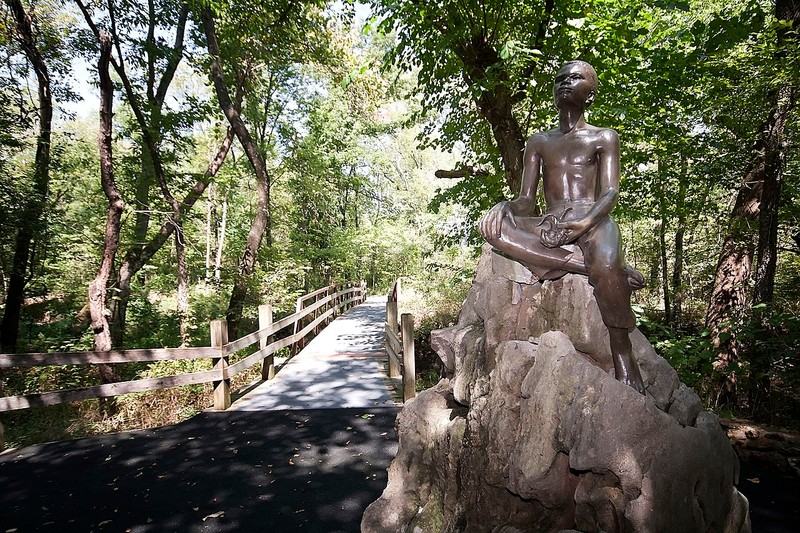George Washington Carver National Monument
Introduction
Text-to-speech Audio
The site of George Washington Carver's boyhood home, this National Historic Site consists of rolling hills, woodlands, and prairies along with a visitor center, theater, museum, an interactive exhibit area for kids, and a 3/4 mile nature trail. The cultural setting includes the 1881 Historic Moses Carver house and the Carver family cemetery. The first National Monument centered on African American history, this site shares the history of the influential scientist and leader along with information about the lives of African Americans in this part of Missouri. Moses Carver enslaved George's parents Mary and Giles Carver. and George Washington Carver was born into slavery sometime in the early 1860s. The site includes exhibits related to slavery and African American life in the late 19th and early 20th centuries, along with exhibits about the life of the future Black leader and man of science.
Images
This statue of George Washington Carver as a child is adjacent to a short walking trail at the site.

Backstory and Context
Text-to-speech Audio
George Washington Carver was born into slavery, and he quickly developed an interest in plants, flowers, and nature in general. He was given the nickname "plant doctor" because he collected and raised flowers. He left the farm at age 11, and after years of turmoil and struggle, was accepted into college to study art in 1890. He then transferred to the University of Iowa to study agriculture. After completing his master's degree and teaching at Iowa State, Carver accepted a position at Tuskegee Institute founded by Booker T. Washington. From there, he became one of the most influential researchers in agricultural science and developed techniques that improved crop yield and supported soil conservation.
Sources
McMurry, Linda O. George Washington Carver. Scientist and Symbol. New York: Oxford University Press, 1981.
The Legacy of Dr. George Washington Carver, Tuskegee University. Accessed March 4th, 2024. https://www.tuskegee.edu/support-tu/george-washington-carver.
